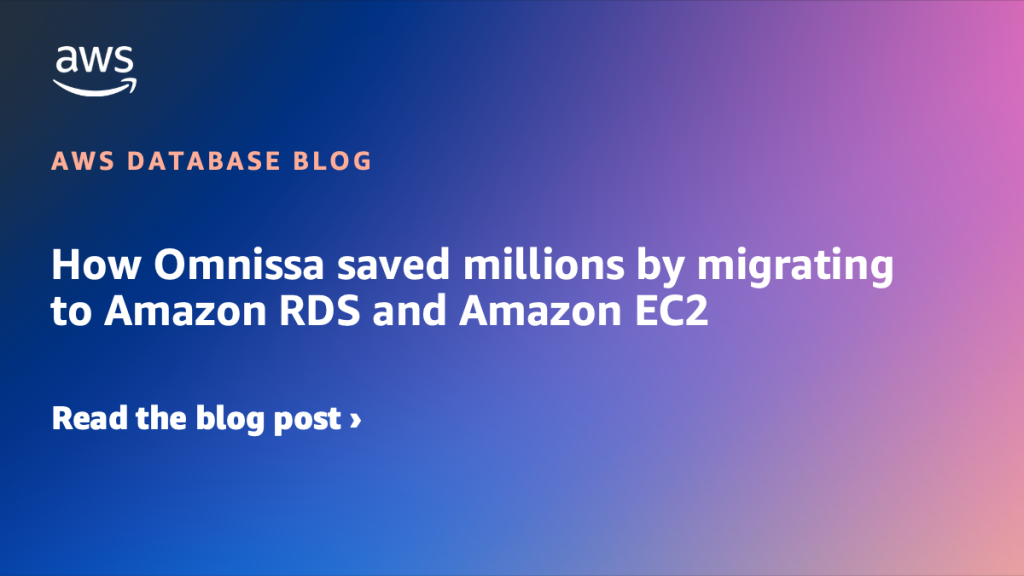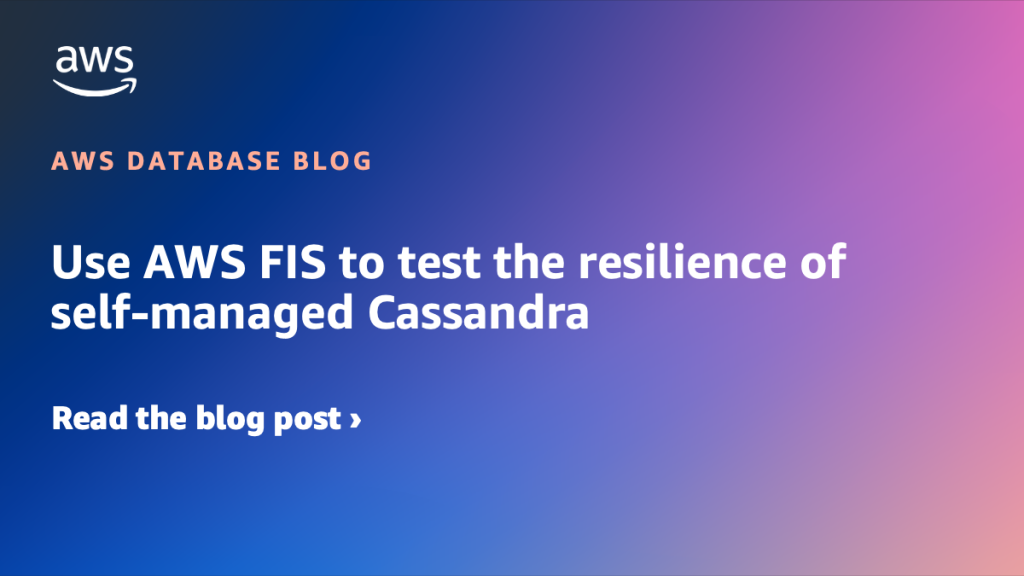AWS Database Blog
Category: Amazon EC2
How Omnissa saved millions by migrating to Amazon RDS and Amazon EC2
Omnissa is a digital workspace technology leader that delivers smart, seamless, and secure digital work experiences for organizations worldwide. It serves 26,000 customers, including the top seven of the Fortune 500 companies. In this post, we walk through the Omnissa’s journey of migrating its mission-critical UEM platform and self-managed SQL Server workloads from VMware Cloud on AWS (VMC-A) to Amazon RDS for SQL Server and its application servers to Amazon EC2.
Use AWS FIS to test the resilience of self-managed Cassandra
Database outages can have devastating effects on your applications and business operations. For teams running self-managed Apache Cassandra clusters, unexpected node failures or memory issues can lead to service degradation, data inconsistency, or even complete system outages. AWS Fault Injection Service (AWS FIS) is a managed service that you can use to perform fault injection experiments on your AWS workloads. In this post, we review how you can use AWS FIS to craft a chaos experiment to test the resilience of your self-managed Cassandra clusters running on Amazon EC2. This can help you understand your application’s ability to reestablish a connection to a healthy node.
Automate Amazon RDS for PostgreSQL major or minor version upgrade using AWS Systems Manager and Amazon EC2
In this post, we guide you through setting up automation for pre-upgrade checks and upgrading a fleet of Amazon RDS for PostgreSQL instances. In this solution, we use AWS Systems Manager to automate the Amazon RDS upgrade job.
Run SQL Server post-migration activities using Cloud Migration Factory on AWS
In this post, we show you essential post-migration tasks to perform after migrating your SQL Server database to Amazon EC2 and how to automate this activity by using Cloud Migration Factory on AWS (CMF), such as validating database status, configuring performance settings, and running consistency checks. Additionally, we explore how the CMF solution can automate these essential tasks, providing efficiency, scalability, and heightened visibility to simplify and expedite your migration process.
Migrate SQL Server user databases from Amazon EC2 to Amazon RDS Custom using Amazon EBS snapshots
In this post, we present a practical approach to one of the most significant challenges organizations face when adopting Amazon RDS Custom for SQL Server: migrating large datasets from SQL Server on Amazon EC2 to Amazon RDS Custom for SQL Server efficiently and cost-effectively. By using SQL Server’s native detach and attach method combined with EBS snapshots, you can migrate your databases without requiring Amazon S3 or AWS DMS.
Using StatsD for monitoring Oracle databases running on Amazon RDS or Amazon EC2
Monitoring databases is essential in large IT environments to prevent potential issues from becoming major problems that can result in data loss or downtime. Having custom dashboards and alarm-based monitoring for the database can help in analyzing historical metrics patterns and improve database availability by alerting users of any abnormal threshold breaches. In this post, we show you how to set up monitoring for your Oracle database using StatsD.
Build resilient Oracle Database workloads on Amazon EC2
In this post, we dive into the various architecture patterns and options available for both compute and storage layers while configuring your self-managed Oracle databases on Amazon EC2 to comply with your HA and DR requirements.
Implement automatic conflict detection and resolution for Oracle GoldenGate bi-directional replication between Amazon RDS for Oracle databases
In this post, we show how to implement automatic conflict detection and resolution (Auto-CDR) for Oracle GoldenGate bi-directional replication between Amazon RDS for Oracle databases.
Automate pre-checks for your Amazon RDS for MySQL major version upgrade
Amazon Relational Database Service (Amazon RDS) for MySQL currently supports a variety of Community MySQL major versions including 5.7, 8.0, and 8.4 which present many different features and bug fixes. Upgrading from one major version to another requires careful consideration and planning. For a complete list of compatible major versions, see Supported MySQL major versions […]
High availability for Oracle GoldenGate Microservices Architecture in AWS
GoldenGate supports Classic and Microservices Architectures. In Part 1 of this series, we covered high availability for GoldenGate classic architecture in AWS. In this post, we discuss a reference architecture for GoldenGate Microservices Architecture (MA) in AWS. The GoldenGate Hub is a widely used deployment model that simplifies operations and lessens the use of system resources on both the source and target systems. This is in contrast to the conventional method where GoldenGate components run directly on the source and target systems.









